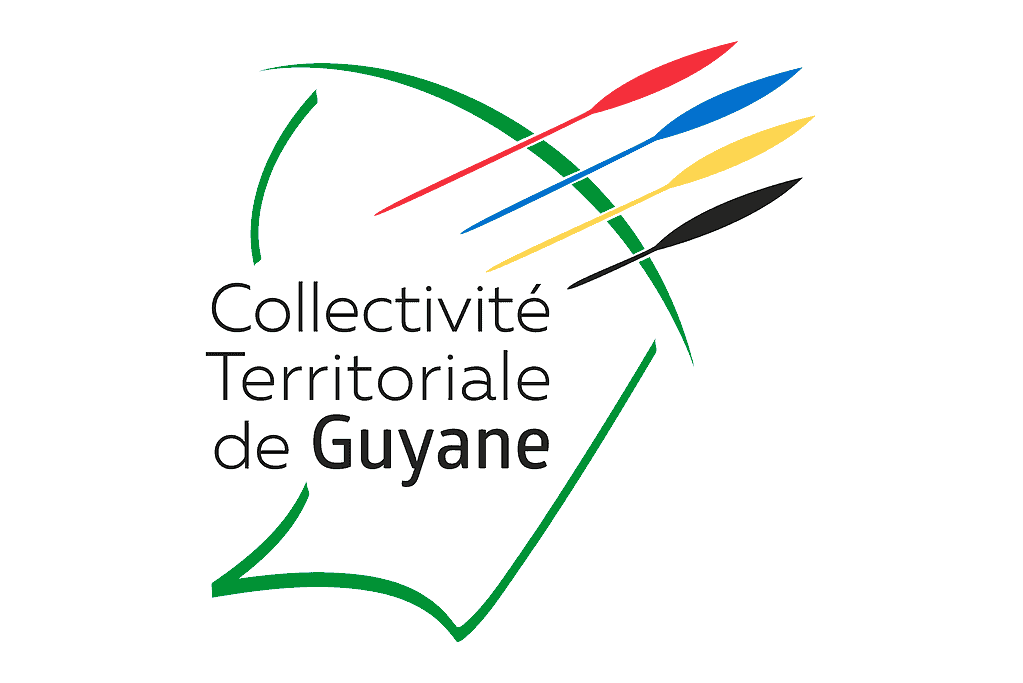French Guiana has one officially recognized flag, another unofficial yet often-flown flag, and other lesser-used but still important flags. Understanding how and why the territory has so many flags requires an examination of French Guiana’s political structure today, as well as a look back at the history that created the modern-day territory.
French Guiana
French Guiana is located on the northern coast of South America. It is bordered by Suriname to the west, Brazil to the south and east, and the Atlantic Ocean to the north.
French Guiana is not a sovereign state. Rather, it is an overseas department (département) of France. France is divided into departments, somewhat similar to how the United States is divided into states (although there are marked differences in how a French department and a U.S. state operate). There are 95 departments on the French mainland. They are numbered 1 to 96, but there is no department 20.
Along with the 95 mainland departments, France also has sovereignty over five overseas departments. Those departments include Mayotte and Réunion, both of which are off the coast of East Africa in the Indian Ocean. The French overseas departments also include Guadeloupe and Martinique in the Caribbean and French Guiana in South America.
Overseas departments have the same legal status as mainland departments. Anyone born in these overseas departments is a French citizen. The euro is the official currency in overseas departments. France’s law applies completely in overseas departments unless the French government approves changes. French overseas departments cannot make laws of their own.

French Guiana is located on the northern coast of the South American continent.
©hyotographics/Shutterstock.com
The Official Flag of French Guiana
As full-fledged French departments with the same rights, currency, and laws as mainland French citizens, the French flag is the official flag of all overseas departments, including French Guiana. Each overseas department also has its own unique flag, but the French government does not officially recognize those flags.

Per the French constitution, the French flag is the only officially recognized flag of all overseas departments.
©iStock.com/Olivier DJIANN
The Unofficial Flag of French Guiana
While it has no official status, a bicolor, starred flag is often flown in the territory. The flag’s two main colors are divided diagonally, with green on the upper fly and yellow on the lower hoist. It features a red five-pointed star in the center.
The green on the flag represents the forest. The Amazon rainforest covers 95% of French Guiana’s territory.
French Guiana is rich in minerals, especially gold. The yellow on the flag represents the gold found in the territory.
The red star is said to represent socialism and/or bloodshed.
The flag was designed in the 1960s and was adopted by the UTG workers’ union. It was adopted in 2010 by the general council of French Guiana after a local autonomy referendum. The flag was never recognized by the regional council, though. Both councils were disbanded in 2015 by the French Guiana Assembly. The flag is still often flown by the French Guianese people. It is also the symbol for the French Guiana national football team.

The unofficial flag of French Guiana is green and yellow with a red star.
©muhammadfadlan/Shutterstock.com
The Flag of the Territorial Collectivity
When the Territorial Collectivity of Guyane was created in 2015, a new flag was designed to represent it. Like its predecessor, the flag is an unofficial symbol of French Guiana.
The flag of the territorial collectivity is a white flag that features a stylized map of the French Guiana territory along with four arrows representing the Maroon people. The Maroons are people who escaped slavery and their descendants who live in the forested interior of French Guiana.
The green outline on the flag represents the environment of French Guiana. The red stands for the people of the territory. The blue represents the territory’s water, be it the ocean water on its border or the rivers that flow through it. Yellow stands for the gold in the territory, while black represents promising future resources such as oil.

The flag of the Territorial Collectivity of French Guiana pays homage to the Maroons with four arrows.
©Carole Mathée, uploaded by Germenfer / CC BY-SA 4.0 – Original / License
The Flag of the Six Indigenous Peoples of French Guiana
A third unofficial flag that is flown in French Guiana is the flag of the Six Indigenous Peoples of Guiana. This flag is an important reminder of the history and culture of French Guiana.
The flag’s design is complex and intricate. It displays the names of the six nations of indigenous peoples, with one color for each linguistic group: yellow for Arawak, purple for Tupi-Guarani, and green for Cariban. The two nations for each linguistic group are opposite one another on the flag. The circle at the center of the flag is a compass rose that features one emblem for each of the six indigenous nations.

The flag of the Six Indigenous Peoples of Guiana features a complex array of colors and symbols to represent the native people of French Guiana.
©Fédération Lokono de Guyane / CC BY-SA 4.0 – Original / License
The photo featured at the top of this post is © rarrarorro/Shutterstock.com
Thank you for reading! Have some feedback for us? Contact the AZ Animals editorial team.







